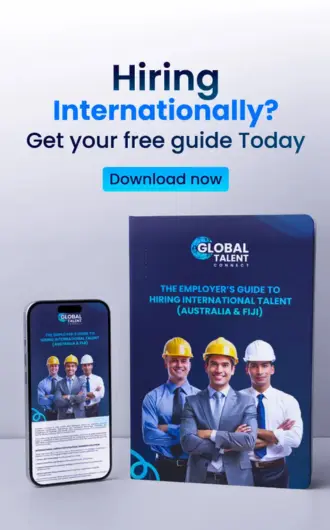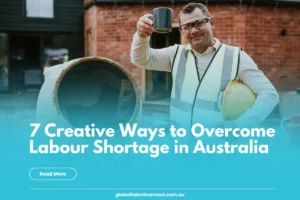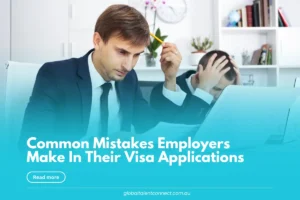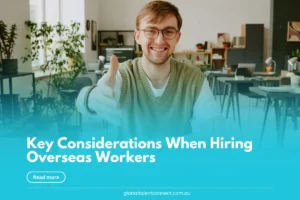Visa sponsorship is a process where a company, school, or individual supports a person’s visa application to live and work in a different country. In the employment world, visa sponsorship allows businesses to bring in overseas talent by taking legal responsibility for the worker’s stay and job role.
This article will specifically explore how visa sponsorship works in Australia and Fiji, covering the legal framework, employer obligations, and opportunities it creates. For employers, it means filling critical roles when there’s a shortage of local workers. For job seekers, it opens the door to new career opportunities and, in some cases, the pathway to permanent residency.
What Is a Visa Sponsorship in Australia?
In Australia, visa sponsorship refers to a formal agreement where an employer must sponsor a foreign worker to fill a genuine job that’s difficult to fill locally. The role must be listed on the Skilled Occupation List, and the employer becomes a standard business sponsor through the Department of Home Affairs.
This type of employment-based visa is common in industries like aged care, healthcare, construction, and engineering. It’s also an important pathway for skilled workers who want to live and work in Australia
Types of Employer-Sponsored Visas in Australia
There are several visa options available to sponsor workers in Australia. Here are the most common types of visa sponsorships used by businesses:
1. Temporary Skill Shortage Visa (Subclass 482)
Also known as the 482 visa, this is one of the most common visa types for temporary work.
- Visa allows stay for up to 4 years
- Used to fill short- or medium-term job shortages
- Employers must complete Labour Market Testing (LMT)
- Offers a pathway to permanent residency through the 186 visa
This sponsorship visa is suitable for roles where skilled workers are in short supply across Australia.
2. Employer Nomination Scheme (Subclass 186)
This is a permanent visa designed for overseas workers or 482 visa holders already in Australia.
- Offers a permanent residency visa
- Has Direct Entry and Temporary Transition streams
- Great for sponsored employees looking to stay in Australia long-term
The subclass 186 visa is ideal for workers with strong work experience and qualifications aligned with the nominated job.
3. Skilled Employer-Sponsored Regional (Provisional) Visa (Subclass 494)
This visa category is designed to encourage migration to regional Australia.
- Valid for 5 years
- Leads to permanent residency through the subclass 191 visa
- Employers must be located in regional areas
- Good option for those wanting to live and work in Australia outside major cities
- This skilled employer-sponsored visa supports the government’s regional development goals.
Who Can Sponsor a Visa?
To sponsor a visa, a company must be:
- A legally operating Australian employer or Fijian business
- Offering a real, full-time position
- Compliant with Fair Work laws
- Able to meet all visa requirements, including paying a fair salary
There’s no fixed limit on how many employees a company can sponsor in Australia, but each case is assessed separately. A business can offer visa sponsorship for multiple roles, as long as each position is justified.
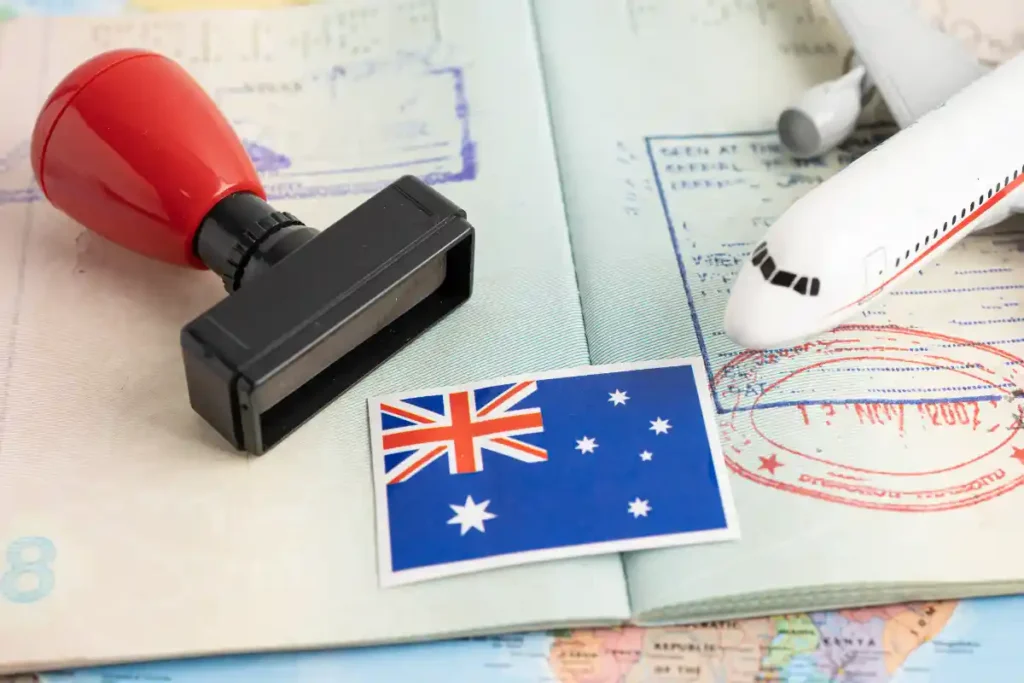
Australia Sponsorship Visa Requirements
Here’s what both employers and employees need to meet:
For Employers:
- Must register as a standard business sponsor
- Show a genuine need for the role
- Follow all rules around sponsorship process, wages, and workplace rights
For Employees:
- Must have relevant work experience, education, and skills
- Complete an English test (IELTS or equivalent)
- Pass health and police checks
- Be applying for a specific visa on the Skilled Occupation List
- Some visa applicants must also meet age and character standards
In Fiji, the sponsorship process is managed by the Ministry of Employment, Immigration and Industrial Relations.
Benefits of Visa Sponsorship
Visa sponsorship offers benefits to both employers and job seekers:
For Employers:
- Access to global skilled workers
- Fill positions where there are skill shortages
- Bring diversity and innovation into the workplace
- Improve retention with a pathway to permanent residency
For Employees:
- Get a work visa to live and work abroad
- Build international career experience
- Access to permanent residency in Australia or Fiji
- Safe, legal employment through employer sponsorship
How to Get the Sponsorship: Step-by-Step Process
Here’s how visa sponsorship works for employers in Australia:
Step 1: Apply to Be a Sponsor
The employer must register and be approved by the Department of Home Affairs.
Step 2: Nominate the Position
The employer identifies a job on the Skilled Occupation List and proves they couldn’t find a local worker. This is a key step in the visa process.
Step 3: Employee Applies for the Visa
- Once nominated, the overseas worker applies for the visa. They will need to show:
- Their qualifications
- Work experience
- English language results
- Police clearance and health check
They apply for the visa under the correct visa subclass, such as a subclass 482 visa or subclass 186 visa.
Step 4: Approval and Ongoing Compliance
- Once approved, the visa holder can begin work. The employer must follow rules such as:
- Notifying authorities if the employee leaves
- Keeping records
- Following all visa conditions
Pros and Cons of Sponsoring an Employee
| Pros | Cons |
| Helps fill jobs with no local applicants | Government process is detailed and strict |
| Encourages skilled migration to Australia | Can be expensive (fees, legal help, training) |
| Keeps strong employees long-term | Employer must follow many rules |
| Builds a global, diverse team | Poor compliance can lead to penalties |
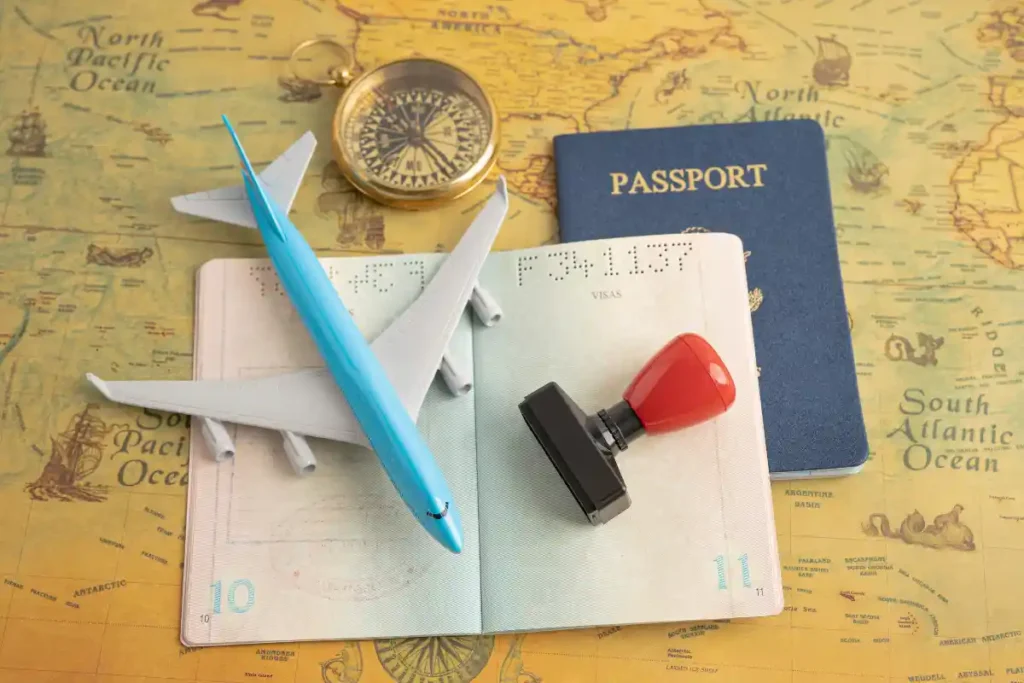
How HR Can Make the Process Smoother
HR teams play a big role in successful visa sponsorship process. Here are some simple steps to follow:
- Use clear job descriptions that match visa requirements
- Keep all records up to date
- Track visa status and expiry dates
- Work with a trusted migration advisor or visa specialist
Tips for a Smooth Sponsorship Process
- Make sure the job is on the Skilled Occupation List
- Conduct proper Labour Market Testing
- Be clear and honest in all documents submitted
- Plan ahead, sponsorship takes time, usually 4–12 weeks
- Choose a reliable visa support partner like Global Talent Connect (GTC) to help at each step
Work Sponsorship Visa in Australia: GTC Can Help
Visa sponsorship is a great way to bring skilled workers to your team, but it can also be confusing. The paperwork, rules, and time involved can be a challenge.
Global Talent Connect (GTC) helps employers simplify the visa application process and stay compliant. We provide:
- Pre-qualified skilled visa candidates
- Global sourcing through training hubs in Bangladesh, the Philippines, and Vietnam
- Help with every type of visa, paperwork, and onboarding
- Long-term support for both employers and workers
With GTC, you can find the right visa solution and stay focused on growing your team.
Visa Sponsorship FAQs
How do I get the sponsorship?
Start by getting a job offer from a company that can sponsor a visa. The employer-sponsored visa process starts with their application.
How long does it take?
Timelines vary depending on the visa type, but it usually takes 4 to 12 weeks.
Can visa sponsorship be cancelled?
Yes. An employer can withdraw support, but this must follow legal rules. The visa holder may need to find a new sponsor.
How many employees can I sponsor?
There’s no strict limit, but you must show each job is genuine. Larger companies must maintain strong HR and compliance records.
What are the requirements for sponsorship?
You must be a registered business, offer a listed occupation, pay the legal wage, and follow all sponsorship rules.
Can I get PR through a sponsored visa?
Yes. Many workers on Subclass 482 visas later apply for permanent residency through Subclass 186 or Subclass 191.
What does visa sponsorship cost?
Costs vary depending on the visa. Common costs include:
- Sponsorship application: ~$420 AUD
- Nomination fee: ~$330 AUD
- Visa fee: $2,800–$4,000+ AUD
- Optional: migration agent or legal fees
Can I switch employers?
Not without a new sponsor. A new employer must repeat the sponsorship process.
What if I want to stay in Australia permanently?
You can apply for permanent residency after meeting visa conditions. Many workers apply for the Employer Nomination Scheme or regional PR routes.
Are there visas that don’t need sponsorship?
Yes. Some skilled visas (like Subclass 189) or student/work holiday visas don’t require employer sponsorship.
Do I need a job offer to apply?
Yes. You can’t apply for an employer-sponsored visa without a job offer from a registered sponsor.
Final Thoughts: Is Sponsorship Right for You?
The visa sponsorship process can be a great solution for both employers needing skilled talent and individuals wanting to live and work in Australia or Fiji. It provides a pathway to permanent residency, career growth, and long-term business success.
But like any legal process, it comes with paperwork, compliance, and strict rules. That’s why working with a trusted partner like Global Talent Connect makes all the difference.
Need help getting started?
Talk to Global Talent Connect today and discover the best visa options available for your needs, whether you’re hiring talent or planning your next job in Australia.

